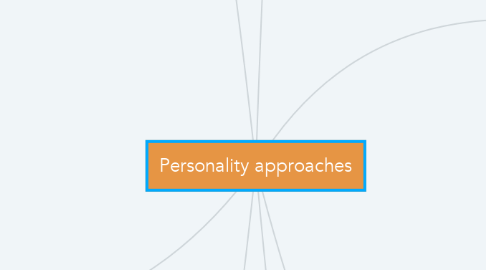
1. 5.- Humanistic approaches
1.1. Maslow and Carl Rogers
1.1.1. Maslow
1.1.1.1. Human beings have need in common and those need to be satisfied at a certain order
1.1.1.1.1. Maslow’s Hierarchy of needs
1.1.2. Carl
1.1.2.1. Basic assumption
1.1.2.1.1. People are basically good
1.1.2.1.2. We can only facilitate learning
1.1.2.2. Teaching
1.1.2.2.1. Trust
1.1.2.2.2. Empathy
1.1.2.2.3. Authenticity
1.1.2.3. Principle of learning
1.1.2.3.1. Human beings have a natural potential of learning
1.1.2.3.2. The individual has a goal they wish to achieve
1.1.2.3.3. Learning in a supportive environment
1.1.2.3.4. Learn by doing
1.1.2.3.5. Self-evaluation is basic
1.1.2.3.6. Learning is to incorporate into oneself the process of change
1.1.2.4. People can have congruence and incongruence
1.1.2.4.1. Congruence: your ideal self and your true self are very similar
1.1.2.4.2. Incongruence: your ideal self and your true self are different
2. 4.-Behavioral perspectives
2.1. Skinner
2.1.1. We respond to every kind of reinforcement behavior and personality can be controlled
2.1.1.1. Reward or punishment
2.1.1.1.1. It is human nature that we behave in such a way that we want to receive rewards
2.1.1.2. Reward or punishment
2.1.2. Our differences in learning are the main reason for our different behavior
2.1.3. Our differences in learning are the main reason for our different behavior
2.2. Bandura
2.2.1. Social cognitive theory
2.2.1.1. Learning: acquisition of knowledge through experience, study or bent taught
2.2.1.1.1. Reciprocle determinatior: behavior influences and is influenced by personal factors and social environment
2.2.1.1.2. Observatory learning: learning through the observation of others
2.2.1.1.3. Self efficacy: individuals beliefs in their capacity to execute behaviors necessary to produce specific performance
2.2.1.2. Cognition: mental action of acquiring knowledge through experience and senses
3. 3.- Neofraud
3.1. Adler
3.1.1. Individual psychology
3.1.1.1. Drive to compensate feeling of inferiority
3.1.1.2. Inferiority in childhood = attempt to gain superiority
3.1.2. Fundamental social tasks
3.1.2.1. Societal task
3.1.2.1.1. Friendship
3.1.2.2. Love task
3.1.2.2.1. Partner for long term
3.1.2.3. Occupational task
3.1.2.3.1. Career
3.1.3. Hypotheses about brothers
3.1.3.1. Oldest is an overachiever
3.1.3.2. Middle one minimizes those negatives
3.1.3.3. Youngest is spoiled
3.2. Erickson
3.2.1. Personality develops throughout the lifespan
3.2.1.1. Eight stages, represent a conflict or development task
3.2.1.1.1. Trust vs Mistrust (0-1y/o)
3.2.1.1.2. Autonomy vs Shame/doubt (1-3y/o)
3.2.1.1.3. Initiative vs guilt (3-6 y/o)
3.2.1.1.4. Industry vs inferiority (7-11 y/o)
3.2.1.1.5. Identity vs confusion (12-18 y/o)
3.2.1.1.6. Intimacy vs isolation (19-29 y/o)
3.2.1.1.7. Generativity vs stagnation (30-64 y/o)
3.2.1.1.8. Integrity vs despair (65+y/o)
3.3. Jung
3.3.1. His proposal
3.3.1.1. Extrovert
3.3.1.1.1. Energized by others
3.3.1.1.2. Distractable
3.3.1.1.3. Jumps from topic to topic
3.3.1.2. Introvert
3.3.1.2.1. Energized by loneliness
3.3.1.2.2. Pays attention easily
3.3.1.2.3. Speaks slowly and stays in topic
3.3.1.2.4. Cautious
3.3.1.3. Persona
3.3.1.3.1. A mask that we adopt
3.3.1.4. Archetypes
3.3.1.4.1. Mental patterns and memory traces
3.4. Horney
3.4.1. She disagreed with freud´s theory that the female psyche was the same as the male psyche, and disputed Penis Envy, while theorizing about Womb Envy. She argued instead that the source of much female psychiatric disturbance is located in the very male-dominated culture that had produced Freudian theory.
3.4.2. Horney’s theories focused on the role of unconscious anxiety. She suggested that normal growth can be blocked by basic anxiety stemming from needs not being met
3.4.2.1. Horney believed there were three styles of coping for children to handle this anxiety:
3.4.2.1.1. Moving Against People
3.4.2.1.2. Moving Toward People
3.4.2.1.3. Moving Away From People
4. 1.- Historical perspectives
4.1. Hippocrates
4.1.1. Personality based on temperaments associates with fluids
4.1.1.1. Choleric (yellow): passionate
4.1.1.2. Melancholic (black): anxious and unhappy
4.1.1.3. Sanguine (red): joyful, eager and optimistic
4.1.1.4. Phlegmatic (white): cal and reliable
4.2. Franz Gall
4.2.1. Said that the spaces between bumps in the skull reveal personality traits
5. 2.- Psychodynamics perspective
5.1. Stages of psychosexual development
5.1.1. Oral: (0-1) in the mouth, may lead to smoking
5.1.2. Anal: (1-3) in the anus, may lead to neatness or messiness
5.1.3. Phallic: (3-6) in the genital, may lead to vanity and overambition
5.1.4. Latency: (6-12)
5.1.5. Genital: (12+)
5.2. Unconscious
5.2.1. Only aware of a small part of brain activity
5.2.1.1. ID: i don’t care
5.2.1.2. EGO: compromise
5.2.1.3. SUPEREGO: not okay
5.3. Defense mechanism
5.3.1. Protective measure for when EGO wants to restore balance
5.3.1.1. Denial: refusing to accept
5.3.1.2. Displacement: transferring urges into others
5.3.1.3. Projection: attributing unacceptable desires into others
5.3.1.4. Rationalization: justifying behavior
5.3.1.5. Regression: returning to coping strategies
5.3.1.6. Repression: suppressing memories
5.3.1.7. Sublimation: redirecting unacceptable desire through acceptable channels
5.3.1.8. Reaction Formation: reducing anxiety by addicting contrary beliefs
6. 6.- Biological approaches
6.1. Depending on your body type your personality can change
6.1.1. Somatotype
6.1.1.1. Endomorph
6.1.1.2. Ectomorph
6.1.1.3. Mesomorph
6.1.2. Minnesota study if twins and temperamenr
6.1.2.1. Even if twins are separated at birth or kept together they tend to have very similar personality traits
6.1.2.2. Biological approache
7. 7.- Traits approaches
7.1. Cultural Understanding of personality
7.1.1. There are culture especific aspect that can change people’s personality
7.1.1.1. there are two aspects
7.1.1.1.1. Individualist
7.1.1.1.2. Collectivist
7.1.2. People can be grouped into the BIG FIVE factors depending on where they live
7.1.2.1. an explanation is
7.1.2.1.1. SELECTIVE MIGRATION
7.1.3. Approves to study personality
7.1.3.1. Cultural-comparative
7.1.3.1.1. Test western ideas in other cultures
7.1.3.2. Indigenous
7.1.3.2.1. Study personality in non Western settings
7.1.3.3. Combined
7.1.3.3.1. Understand both universal and cultural variations in personality
7.2. 5 traits in different spectrum
7.2.1. Openness: imagination,feeling
7.2.1.1. High score: curious
7.2.1.2. Low score: practical
7.2.2. Conscientiousness: competence and thoughtfulness
7.2.2.1. High score: hardworking
7.2.2.2. Low score: impulsive
7.2.3. Extroversion: sociability and emotional expressions
7.2.3.1. High score: outgoing
7.2.3.2. Low score: reserved
7.2.4. Agreeableness: cooperative
7.2.4.1. High score: helpful
7.2.4.2. Low score: critical and uncooperative
7.2.5. Neuroticisms: unstable emotions
7.2.5.1. High score: anxious and unhappy
7.2.5.2. Low score: calm and even-tempered
